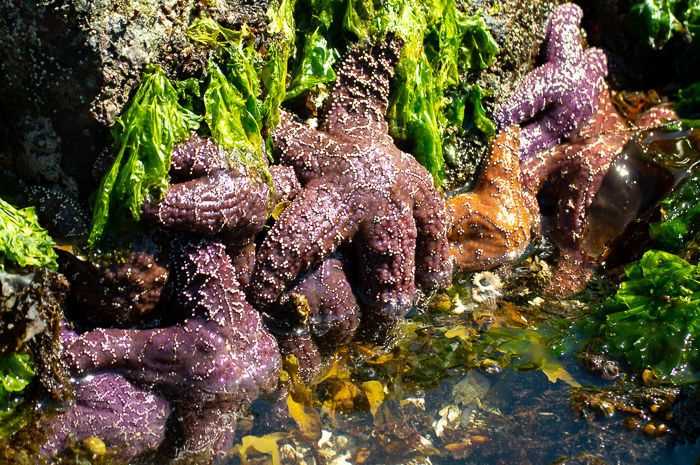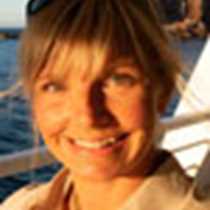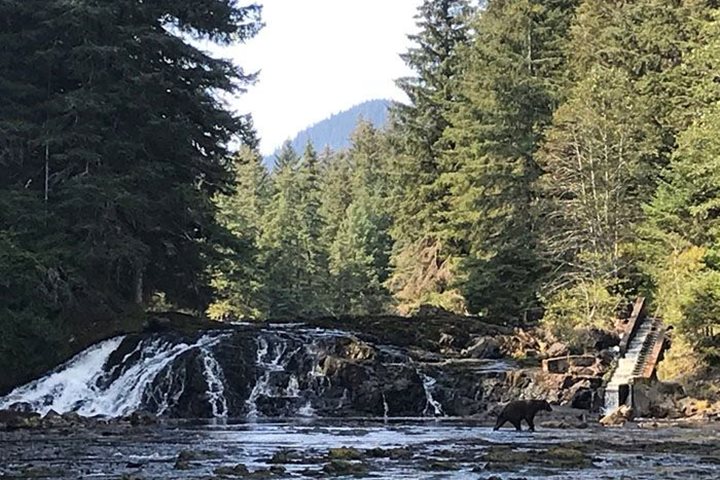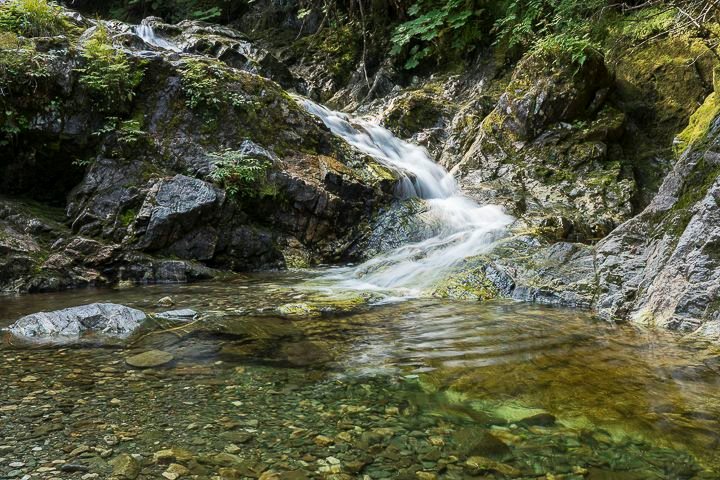Day two of our expedition in Southeast Alaska on National Geographic Sea Bird was an absolute dream. We had the fortunate opportunity to watch cooperatively feeding humpback whales, playful Steller sea lions, colorful walls of sea stars, traveling killer whales, and much more.
Before 7 a.m. this morning, we were called out to the bow of the ship to observe whales. But not just any whales—and not just a small dot on the horizon. We were told to grab our cameras because we had several humpback whales near the ship and they were cooperatively bubble-net feeding. Unbelievable! Our expedition had barely begun and already something that will surely be a highlight of the journey has pulled us from our warm beds. Naturalist Nick Brown explained that bubble-net feeding is a rare treat to observe. The phenomenon occurs when humpback whales use tools underwater—blowing bubbles or emitting sharp, loud noises—to push together and stun herring before the whales swoop beneath the fish to eat them. After more than an hour of watching the feeding behavior, we moved into the dining room for a delicious, fresh breakfast.
Our early and late afternoon was filled with opportunities to hike into uncharted areas of the forest or work one-on-one with the onboard National Geographic photographer Dan Westergren and our two photo instructors, Nathan Kelley and Brenda Tharp. We could also take small-boat excursions to see intertidal life at low tide, then visit a Steller sea lion haul-out. There was an outstanding array of sea stars, sea cucumbers, and sea urchins exposed all along the waterline. Sunny skies made the air warm and inviting, filling our spirits with child-like enthusiasm to get out, get dirty, and experience new things you can only find here in wild Alaska.
Just when we thought the day was complete, killer whales showed up along the ship. Once again, our expedition team gleefully scurried out on deck to watch these magnificent creatures up close. Our day was filled with wildlife from start to finish. Another fantastic adventure on National Geographic Sea Bird.







